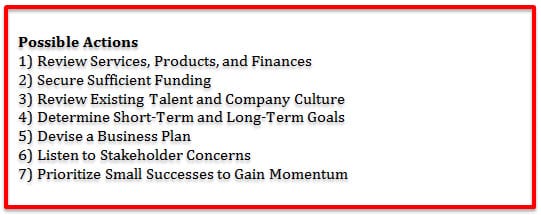When the business landscape changes, how can you turnaround a failing company?
(Source: Flickr)
RADIOSHACK, an American consumer electronics giant of yesteryear, faced chaotic trading on Wednesday as analysts predicted the company would report it’s 10th straight quarter of losses.
RadioShack has hired a law firm to provide restructuring advice in an attempt to avert bankruptcy. Assuming this leads to successful refinancing, what should the strategy be to turnaround and save this iconic company?
When faced with a broad turnaround question, it is important to ask a variety of questions to determine the source of the problem.
Why is the company failing?
What have been the prevailing trends in the industry?
Are competitors facing the same problems?
Looking at the stock price of RadioShack over the past fifty years, it is apparent that the dotcom boom represented the height of success for the company.
RadioShack had developed a reputation as the ultimate shopping destination for budding innovators and engineers. Unfortunately, the company has struggled to modernize, doing little to transform itself into a destination for mobile buyers.
By comparison, rivals Amazon and Wal-Mart have continuously adapted and maintain a significant competitive advantage in pricing these products due to scale.
In a competitive landscape fraught with declining sales of consumer electronics and falling margins, RadioShack has fallen into a precarious situation.
What strategy can be implemented to save the company?
Marc Consentino in his book Case In Point suggests the following possible actions for a company turnaround.
I believe the most applicable actions for Radio Shack involve a thorough examination of current product offerings as well as a transition in company culture.
RadioShack will be forced to close a significant proportion of its brick and mortar stores as part of any restructuring plan. This should present the company with the opportunity to reinvent product offerings and create a new culture.
RadioShack needs to return to its roots as a place of innovation by offering specialty and niche products that are unavailable through the company’s major rivals. Shifting the product focus must also be accompanied by a shift in employee training, encouraging hiring practices that target inventive individuals that can appropriately engage with the new desired consumer base.
Rather than attempt to compete with pre-existing rivals, RadioShack needs to carve out a new niche in the consumer electronics market that celebrates the pioneers and the mavericks.
What strategy would you recommend for RadioShack?
Let us know your thoughts in the forum! (The person with the best response in the next 48 hours will win a copy of Marc Consentino’s Case In Point or another book from the Bookshelf.)
🔴 Like this article?
Sharpen your edge in consulting

